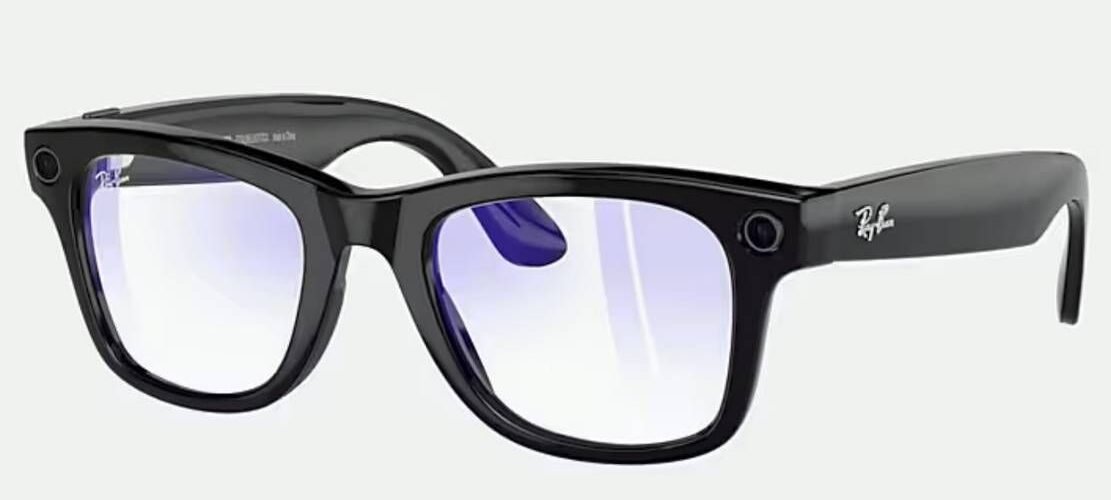Ray-Ban Meta Smart Glasses Review: Fashion Meets AI

Ray-Ban and Meta teamed up to create the Ray-Ban Meta Smart Glasses, merging iconic eyewear style with cutting-edge AI technology. This collaboration aims to make smart glasses appealing not just to tech enthusiasts but to everyday users who value fashion and practicality. The 2025 edition builds on the success of the earlier Ray-Ban Stories, offering improved AI, better hardware, and more natural integration of tech features into a familiar design.
Design and Build Quality
The Ray-Ban Meta Smart Glasses retain the timeless Ray-Ban silhouette, available in popular shapes like Wayfarer, Skyler, and Headliner. The design team slimmed the frame and reduced overall weight to improve comfort for long-term wear. Meta and Ray-Ban also engineered the glasses with a balanced fit so they rest securely without pressing uncomfortably on the nose or ears.
The temples house tiny open-ear speakers and microphones, allowing you to listen to music, take calls, or interact with Meta AI without blocking your surroundings. A discreet touchpad on the right temple lets you adjust volume, skip tracks, or answer calls with simple swipes and taps. A 12-megapixel ultra-wide camera sits near the lenses, blending into the frame so it does not break the glasses’ classic look.
The build feels solid, with sturdy hinges and premium materials. Ray-Ban offers multiple lens options—clear, transitions, polarized, and standard sunglass tints—so users can customize them for daily wear, outdoor activity, or style preference.
AI Features and Everyday Use
The standout addition comes from the improved Meta AI integration. Users can now use a “look and ask” command, telling the glasses to analyze whatever they see. You can point your gaze at a landmark, a menu in a foreign language, or even a plant, then ask the glasses to identify it, translate it, or give related information.
The AI also remembers locations—helpful if you forget where you parked your car—and sets voice reminders without requiring a phone in hand. These features turn the glasses into a personal assistant you wear on your face, ready to respond in real time.
For creators, the glasses allow hands-free photo and video capture in 1080p. You can livestream to social media directly, making it easy to share events or experiences from a first-person perspective. Although the image quality does not surpass flagship smartphones, it offers a unique, immersive angle that handheld devices cannot replicate.
Audio Performance
The open-ear speakers keep you aware of your environment while listening to audio. This design works well for spoken content like calls, podcasts, or audiobooks. However, music enthusiasts may find the bass light and the overall sound less immersive than over-ear headphones or high-quality earbuds.
The microphones pick up voice commands clearly, even in moderately noisy environments. Call quality feels crisp, and recipients hear your voice without major background interference. The directional mic design reduces wind noise during outdoor use, which improves clarity for both commands and calls.
Battery Life and Charging
The battery supports about four hours of continuous active use—enough for casual outings, social events, or short work sessions. However, heavy users may need to recharge mid-day. The glasses come with a charging case styled like a Ray-Ban sunglasses case, which extends battery life by holding multiple charges. The case charges via USB-C, making it compatible with modern devices and power banks.
Comfort and Style
One of the strongest advantages comes from the glasses’ ability to pass as regular eyewear. They feel and look like stylish Ray-Bans rather than futuristic gadgets. This makes them socially acceptable in ways earlier smart glasses failed to achieve. You can wear them in public without drawing unwanted attention, and they fit seamlessly into everyday fashion.
The lightweight build helps reduce fatigue during all-day wear. Even with the added tech inside the frame, the balance feels natural, so you do not constantly adjust them.
Privacy and Ethical Concerns
The small camera indicator light, meant to signal recording, has raised privacy debates. Some people fear that bystanders cannot easily tell when someone uses the camera. The controversy deepened when online sellers began offering stickers that cover the indicator, effectively enabling covert recording. This raises ethical questions about personal security and surveillance in public spaces.
Meta states that they designed the light to meet transparency standards, but critics argue that awareness remains too low. Users need to remember the responsibility that comes with wearable recording devices.
Recent Developments and Market Performance
The latest model has outsold the previous generation, thanks to meaningful AI upgrades and the addition of livestreaming capabilities. This surge in popularity shows that consumers respond positively to features that blend technology with style and convenience.
High-profile endorsements have boosted its visibility. Media personalities and influencers, including well-known TV hosts, have praised the glasses for their hands-free content creation and everyday usefulness.
At the same time, competition has started heating up. Xiaomi recently announced AI-powered glasses with longer battery life, electrochromic lenses, and advanced real-time translation features. Although Xiaomi’s product currently sells only in the Chinese market, its stronger specs highlight where Ray-Ban and Meta might improve future versions.
Looking Ahead – Rumors About the Next Generation
Industry leaks suggest that the third generation of Ray-Ban Meta Smart Glasses may arrive in late 2025. Expected upgrades include improved battery life, sharper camera resolution, and enhanced AI capable of recognizing familiar faces or displaying quick visual prompts on a small internal lens display. There may also be separate product lines for sunglasses and optical glasses, catering to both outdoor and indoor users.
If these rumors prove accurate, the next version could shift from being a novelty to a genuine daily-use device for a wider audience.
Strengths
- Stylish, discreet design that blends with everyday fashion
- Useful hands-free AI features for information, reminders, and translations
- Convenient livestreaming and POV content creation
- Lightweight comfort for extended wear
- Social acceptability compared to other smart glasses designs
Weaknesses
- Battery life too short for heavy all-day use
- Audio quality adequate for speech but underwhelming for music
- Camera quality solid but not competitive with top smartphones
- Privacy concerns over small recording indicator light
- Emerging competitors with stronger specs in key areas
Final Verdict
The Ray-Ban Meta Smart Glasses strike an appealing balance between technology and style. They let you interact with AI, capture unique perspectives, and stay connected without pulling out a phone. While the camera and audio leave room for improvement, and the battery limits intensive use, the glasses already prove themselves as a functional lifestyle accessory rather than just a gimmick.
For casual tech users, urban explorers, or creators who value both appearance and functionality, these glasses bring genuine utility. They also show the potential of wearable AI when it blends seamlessly into something as familiar as a pair of sunglasses.
The product still faces challenges—particularly with battery longevity, privacy perception, and competition—but the momentum feels strong. If Meta and Ray-Ban deliver the rumored enhancements in the next generation, smart glasses could finally move from niche curiosity to mainstream must-have.













